Subscribe now and get the latest podcast releases delivered straight to your inbox.
There’s a lot at stake during a new employee’s first week of work.
Just imagine your first day. It’s exciting, but also scary.
You arrive full of optimism and eagerness to get started. Then, you walk in the door and the next moment can go two ways:
- You can wander around inside of a building you’re totally unfamiliar with, searching for someone who can help tell you where to go.
- You’re greeted by someone awaiting your arrival, who guides you to a tidy desk complete with a beautiful new employee kit and a welcome sign on it.
Onboarding is a perfect opportunity for employers to win over the hearts and minds of their new team members. First impressions are massively important, and on an employee’s first day, they’re making note of every detail, so you don’t want to leave anything up to chance.
You also don’t want to show up to this part empty-handed.
When welcoming a new employee, you want to make sure they’re greeted with their very own new hire onboarding kit -- and we’re not just talking about paperwork and office supplies.
The Importance of Good Employee Onboarding
Employee onboarding is becoming increasingly important.
In a competitive war on talent, companies need to be doing whatever they can to attract, and retain top employees; and that all starts with your approach to onboarding new employees.
“Onboarding is a magic moment when new employees decide to stay engaged or become disengaged,” said Amy Hirsh Robinson of The Interchange Group in an interview with the Society for Human Resource Management.
“It offers an imprinting window when you can make an impression that stays with new employees for the duration of their careers.”
New hires who have a poor onboarding experience may conclude that the organization is poorly managed and decide that it was a mistake to take the job.
This is particularly true of millennials.
Notoriously labeled “job hoppers,” millennials are more likely than previous generations to bolt if they feel the fit isn’t right at a company.
Already, millennials are beginning to make up more and more of the workforce, so it’s important that organizations better prepare for their arrival.
Not investing in your onboarding experience is setting the stage for an early exit.
More than a Human Resources (HR) Concern
This responsibility of onboarding new employees goes way beyond just HR and People Ops.
As companies begin to turn more focus on their employer brand –– an organization’s reputation as an employer, as opposed to its more general corporate brand reputation that is geared towards consumers –– marketing teams have to be ready to take on the onus.
A study from the Harvard Business Review shows that as companies shift resources towards their employer brand, the responsibility is also shifting from HR teams to the CEO and/or marketing.
Employee retention and engagement is a full-team effort, and your company can’t afford for your marketing team not to be involved in the onboarding process.
If there’s any place where onboarding and marketing collide, it’s the new employee onboarding kit.
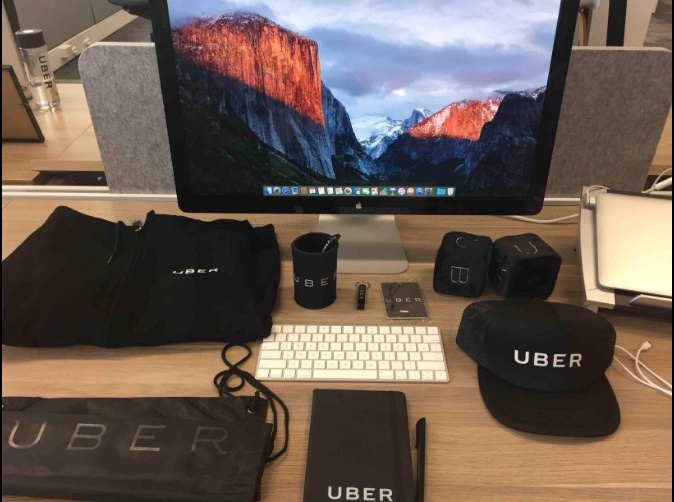
Why a New Employee Onboarding Kit is a Must Have
A new employee onboarding kit is a marketing tool; it just serves a different purpose than most of your traditional marketing efforts, as it’s built to boost your employer brand.
No, an onboarding kit full of company swag isn’t a replacement for a strong company culture and good benefits, but it’s definitely a strong component of it, and when your new hire kit is well thought out, it’ll make a big difference.
1. Sparks Employee Engagement
One of the pros of a well-crafted employee onboarding kit is that it can help spark employee pride, engagement, and advocacy.
People tend to wear t-shirts, carry water bottles, or use other gear from companies they support or align with. Giving your employee new gear to represent your company will help turn them into a promoter and champion of your brand even outside of the office -- plus who doesn’t love some free swag!
A common boast companies make is “Our people are our greatest asset.”
While this may sound cliché, it’s actually very true of employer branding.
People are far more likely to listen to what a company’s employees say about them than what their recruiting ad does. This means attracting talent relies heavily on employee engagement and advocacy.
Everything you can do to make this happen goes a long way.
2. Promotes Company Culture
The onboarding kit is also an excellent way to show your new hire what your company is all about.
Sure, they’ll have read up about your company, but this is your first chance at truly immerse them in who your company is, and what their experience here will be like.
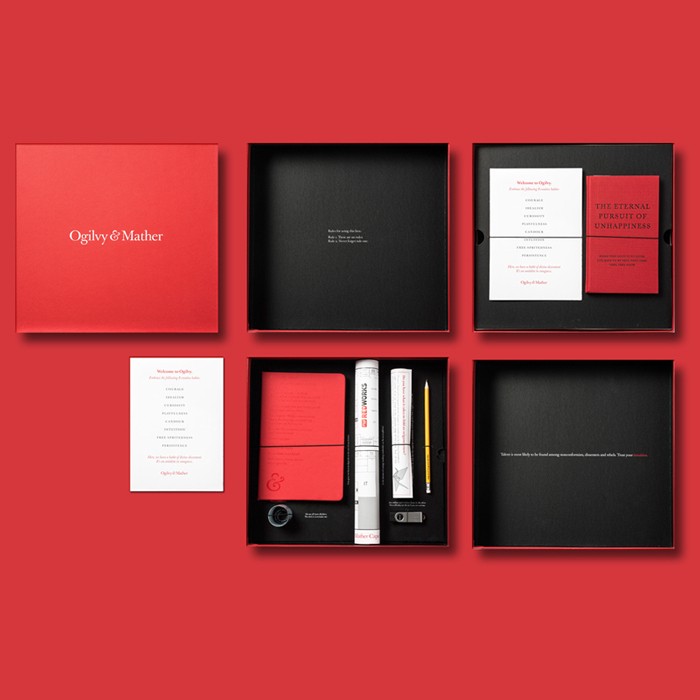
The example above is from Ogilvy, one of the world’s most renowned advertising agencies.
The company’s founder, David Ogilvy, is known as the father of advertising, giving the company a really rich history in the \industry.
Ogilvy really leans into this reputation with its employee welcome kits.
The inside contains a book written by Ogilvy himself, as well as a list of his eight creative habits.
These components work well in that they reflect the company’s rich history, all while setting the stage for what your time will be like at the agency, while also offering something a bit fun and unexpected.
A well-crafted new hire kit will incorporate clever ways of welcoming a new employee and give them a peek into the company’s culture.
3. Makes Your New Hire Feel Welcome
When your company or team gains a new employee, it’s critical that you invest in making them feel welcome.
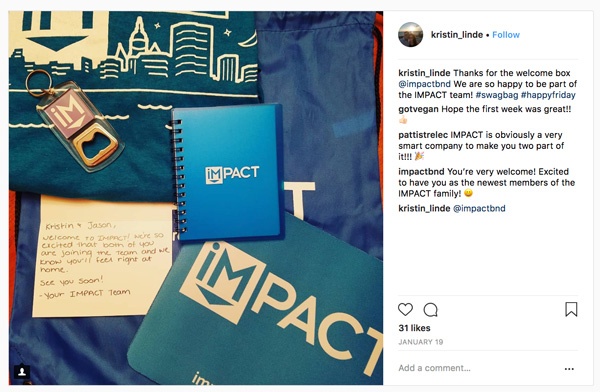
Studies show that during their first couple of months, new employees are still feeling out whether they fit in with the company/team –– an experience called belonging uncertainty.
Thoughtful company swag in an onboarding kit can be a great way to combat any uneasiness your new hires may be feeling.
Imagine the scenario where your new employee receives their kit, and the next day they decide to wear their new company t-shirt, only to walk past a coworker wearing the same shirt.
Yes, the situation is silly and maybe slightly embarrassing, but also disarming and provides an excellent icebreaker to approach a co-worker and get to know them.
These small moments help your new hire feel the part.
That feeling is important and inspiring it right out of the gate will give you a solid first step towards turning them into a lifelong employer brand advocate and promoter.
So, What Goes in An Employee Onboarding Kit?
It can include necessary things like a laptop, notebooks, a key to the building, or an employee handbook, but also consider some fun swag items like water bottles, stickers, t-shirts, etc.
Unexpected things like these get people excited, and let them know that your organization is thinking about you as a human being, not just an employee.
Kevin Spahn, Art Director at Element Three, a marketing agency in Indianapolis with serious authority when it comes to employer branding, says items in their kit are divided into three categories: informative, practical, and fun.
The informative. This is your baseline info that new hires need to know. Items might include:
- Map of the office
- Key to the building
- A letter from the company president
- Parking instructions
- Information on benefits
- A checklist of things you’ll get done in your first month
This may sound relatively boring, but it doesn’t have to be.
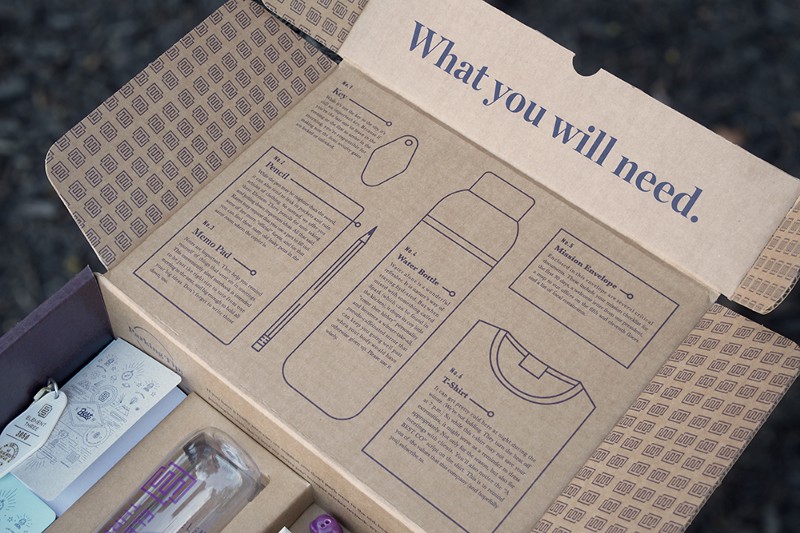
Element Three (seen above) actually turns their onboarding kit into a game of sorts. Inside is a checklist full of tasks for the first month, with each tab on the checklist helping them learn something important about their new surroundings.
The practical. These items are the ones that help your employees do their jobs, like these waiting patiently for a new team member on their desk at FanDuel.
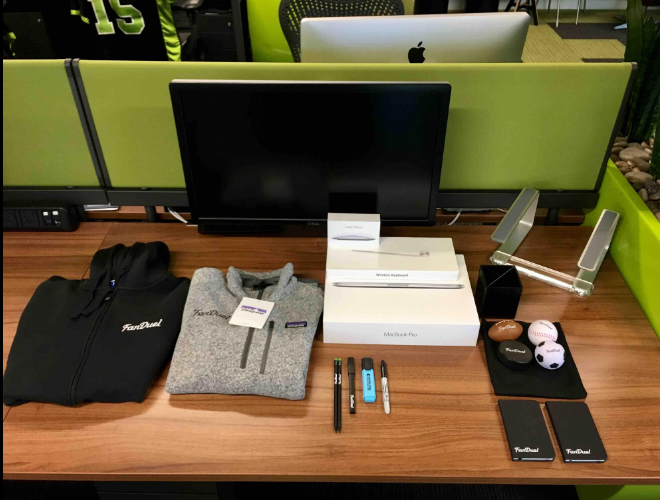
Practical items might include:
- Laptop
- Notebooks & pens
- Flash drive
- Monitor stand, mouse, and mouse pad
- A professional development book
Now we’re getting a little flashier, but the excitement of office equipment wears off relatively fast.
That doesn’t mean you don’t have a chance to make a strong impression here, however.
Per Gallup, something important to employees –– and millennials in particular –– is knowing that you’re invested in their growth. A small but potentially impactful gesture — give your new hire a book related to their professional growth.
Whether it be on something more general like leadership, or a book with industry-specific knowledge, the fact that their betterment was even a thought will mean something and might make them want to stick around and grow at your company rather than elsewhere.
The fun. Now we’re talking.
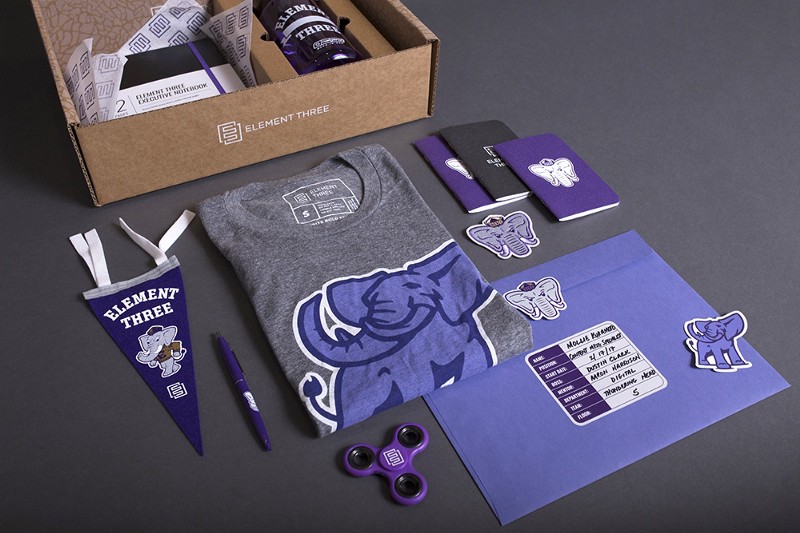
This is when you get to outfit your team with more exciting gear that may not be a need but certainly is a want. It could include things like :
- Apparel (t-shirt, sweater, hoodie, polo, etc)
- Water bottle
- Stickers
- A pennant
- Enamel pins
- A coffee mug
Add some excitement to your onboarding kit! These are the items that will make people really excited about joining your team, and help you come off as, well, cool.
Don’t think you can’t enforce company culture here, though. A thoughtful message on the inside tag of a t-shirt or a clever bit of copy on a company water bottle can help reinforce your brand and mission to employees in a memorable way.
One key here: when thinking swag, make sure you get swag that people actually want.
It may seem silly to put a lot of thought into swag items, but it’s all pointless if they’re not items people will use.
Plus, thoughtless swag doesn’t reflect well on your brand, so make the investment worth it and be sure to do it right.
Get Your Employees On Board!
In many ways, it’s an employee’s market and your company can’t afford to not have a well-thought-out onboarding structure. Now’s the time to get started!
Be sure to use these tips to put together the perfect new hire onboarding kit that not only gives your new employee everything they need to get their work done, but also some surprises that makes them excited about doing so.


Order Your Copy of Marcus Sheridan's New Book — Endless Customers!

